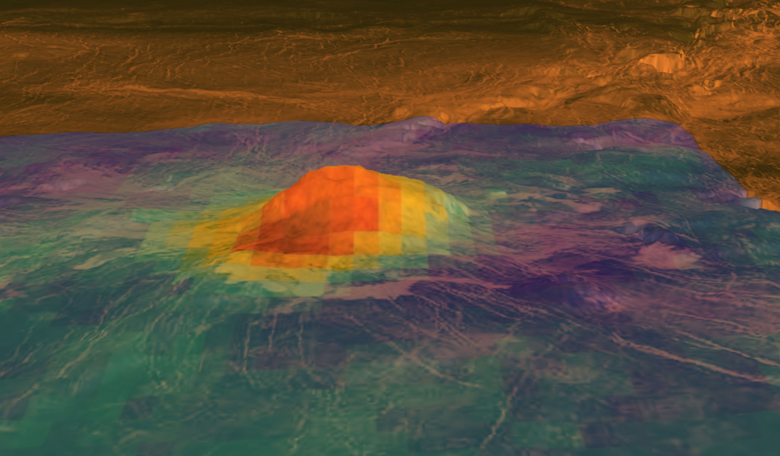A few worlds in our Solar System are volcanically active; Saturn’s moon Titan spews out water ice, Jupiter’s moon Io has hundreds of volcanoes created from its gravitational dance with the huge gas giant, but only one planet has hot lava pouring out from its deep interior; Earth. Now however, new research suggests that Venus, Earth’s “twin”, is also volcanically active and that the lava flows may be only a few years old.
As organisations dream of setting up colonies on Mars, Venus, is in many respects, a much better option for creating an off-world outpost than the Red Planet.
Both worlds are similar in size, density and surface composition and both have an atmosphere with a complex weather system.
However, when it comes to atmospheres, Venus' is the very opposite to Earth's. Its thick, dense skies not only helps keeps the planet blistering hot, it is also very toxic to humans. As such, the prospects of astronauts landing on the planet’s surface anytime soon is out of the question.
Despite that, scientists are now more than ever keen to get a closer look at Venus. Why? Because Venus might be a lot more active than previously thought and that could help researchers understand planetary processes better.
Venus has been known to have volcanoes for some time. In the early 1990s, radar imaging from NASA’s Magellan spacecraft revealed a world of volcanoes and extensive lava flows. But ascertaining just how old they might have been proved very difficult at the time.
Over a decade later, the European Space Agency’s (ESA’s) Venus Express orbiter took up the mantle by measuring the amount of infrared light emitted from part of Venus’ surface (during its nighttime) to try and establish the ages of the lava flows.
Although the studies helped scientists to identify “fresh” lava versus altered lava flows on the planet, it still wasn’t known just how fresh, fresh was (was the lava 2000 years fresh or 2 million years fresh?) because of Venus’s hot caustic atmosphere that has a direct impact on its surface conditions.
As space probes from Earth don’t last long on Venus, the next best option was to recreate a Venus-like environment in a laboratory, which is exactly what Dr. Justin Filiberto, a Universities Space Research Association staff scientist at the Lunar and Planetary Institute (LPI) and his colleagues did.
In the lab, the team looked at how an abundant mineral, olivine, found in lava rocks known as basalt, reacts when exposed to an atmosphere as hellish as Venus’.
Dr Filiberto and colleagues found that once erupted onto the surface, olivine reacts rapidly with the atmosphere and within weeks becomes coated with the iron oxide minerals magnetite and hematite, due to the lack of water on the planet.
Hematite in turn affects the minerals reflectance and emissivity (the measure of an object's ability to emit infrared energy) properties in visible and near-infrared (NIR) wavelengths of light.
This change the team discovered, on a planet like Venus, happens really fast - within a matter of days.
The disappearance of the the near-infrared signature emitted by hematite suggests that the lava flows examined by the Venus Express spacecraft are no more than several years old say Filiberto and colleagues meaning that Venus could be volcanically active today.
This would make it the only planet in our solar system, other than Earth, with recent eruptions.
“If Venus is indeed active today, it would make a great place to visit to better understand the interiors of planets,” says Filibert, whose research recently appeared in the journal Science Advances.
“For example, we could study how planets cool and why the Earth and Venus have active volcanism, but Mars does not. Future missions should be able to see these flows and changes in the surface and provide concrete evidence of its activity.”
Venus might not be the number one destination for missions like Mars is, but there a few projects lined up to learn more about the planet’s atmosphere and surface conditions.
The European Space Agency (Esa) is evaluating a Venus mission, and NASA was also investigating a possible mission involving a clockwork rover inspired by mechanical computers called AREE; the Automaton Rover for Extreme Environments. Meanwhile both India and Russia with their Shukrayaan-1 orbiter and Venera-D spacecraft, respectively, are also currently in development with launches planned in the next decade.











